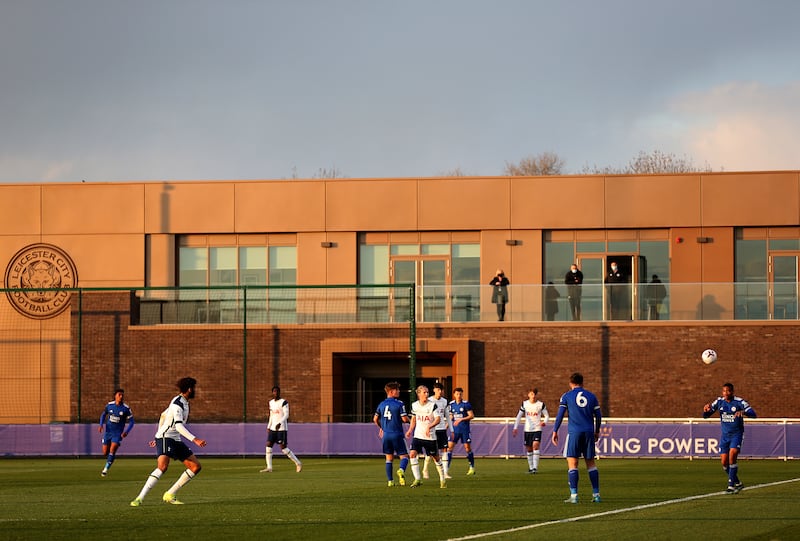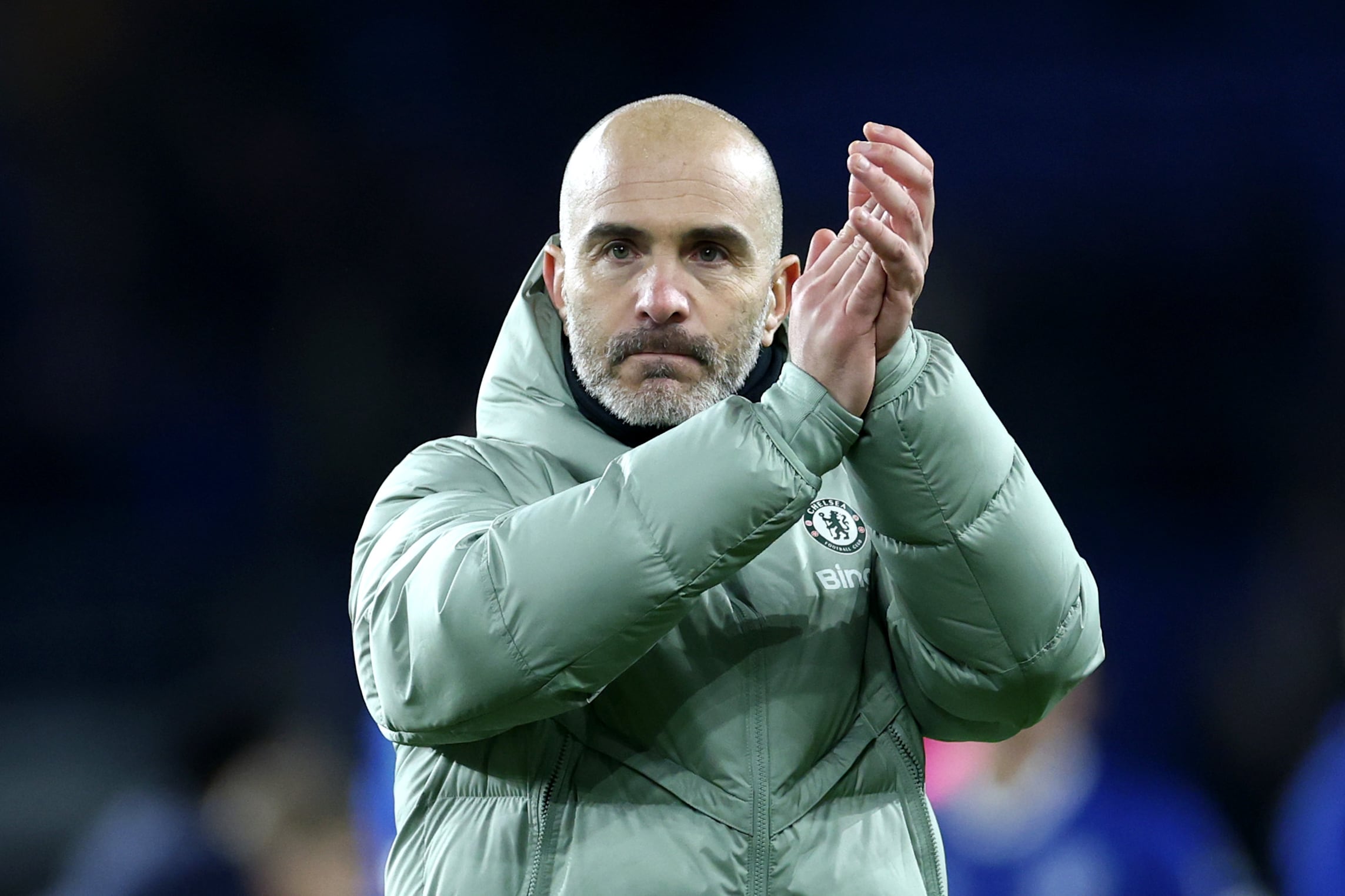Crystal Palace can be relegated this season. That sentence could come with a question mark attached but it doesn’t because it is a statement of fact.
Check the table and there Palace are, 12th, seemingly secure, destined for what would be an 11th consecutive season in the Premier League come August. They could be planning for 2023-24, considering recruitment, and of course they will be. But Palace will also know they need to gather a few things together first, and those things are called points.
Palace have 27 of them and as we are in March and there are 13 games to go, it’s easy to think the club has time and opportunity. Then you look at Palace’s previous 13 league games and their points tally from them – 11 – and you wonder: will 38 points keep a team up this season?
“We’re probably all looking at around 40 points to stay away from the bottom.” So said David Moyes last Saturday.
READ MORE
Moyes’ team, West Ham United, had just been flattened 4-0 by Brighton, so perhaps his pessimism was enhanced.
Forty points? There are those Hammers fans for whom Moyes is rooted in the past, so to hear the 40-point mark referenced – for the first time in a while – will confirm that. In the past 10 Premier League seasons, the average required to come 17th and stay up has been 34 points.
But ever since the Qatar World Cup was inserted into this season we have said it could be different. There were early warnings about player fatigue and Jurgen Klopp has kept the topic relevant. Certain players look drained – and the long-term effects on this constant pushing of the body will be seen years from now. Casemiro has played 42 games since mid-August.
Does the World Cup and physical exertion explain why, two-thirds of the way through the season, Palace are one of nine clubs separated by six points? Are we witnessing a levelling out, or a levelling down?
Amid the hype of the Premier League it is easy to scorn a lack of competition – this will be Manchester City’s fifth title in six seasons if they make it. But while City have rattled up some big scores, they have also been pushed – Palace for example led 2-0 at half time in August until Erling Haaland got going. City have drawn 1-1 with Everton and Nottingham Forest. Only last Saturday Arsenal were 2-0 down to bottom club Bournemouth before their late comeback. The league leaders lost at Everton last month, and only beat Leicester 1-0, Leeds 1-0.
What the condensed bottom and narrowness of many results might actually reveal is a levelling up.
Palace have been in the Premier League since 2013, Southampton since 2012, Wolves since 2018. Everton, famously, have not been in the second division since 1954. Leicester City have been champions of England more recently than being in the Championship.
The money accumulated has been spent, particularly over the past decade, on new or upgraded stadiums and training grounds. There has been increased investment in academies and recruitment departments. Clubs have jumped organisationally – there are infrastructure lessons for Irish football here.

So it is not just City, Liverpool and Tottenham with facilities that can genuinely be called elite; Leicester’s new base at Seagrave cost an estimated £90 million. Palace’s new training ground cost an initial £20 million, Bournemouth’s plan will cost £35 million, Southampton have revamped theirs for over £30 million. Burnley are bouncing back from the Championship at their £11 million facility.
At each of the nine clubs who can go down there are also outstanding players. People keep under-estimating how difficult it is to make it at any level of professional football, so to be in a Premier League squad requires talent. Bournemouth have Dominic Solanke and Philip Billing – could they not play for Tottenham or Newcastle? Wolves have Ruben Neves, Southampton have James Ward-Prowse, West Ham have Declan Rice, Leicester have James Maddison.
Of course there have been mistakes in buying, some of which are financially outrageous and questionable. Player and executive wages are astronomical and often unsustainable. There are fans at each of the threatened nine who will be able to pinpoint other flaws. But that does not mean these are nine badly-run clubs or nine bad teams, and six of them will “survive”.
But who will be the trio to drop?
Bournemouth is the obvious place to start. They have won five games and probably need to win another five. They play six of the teams embroiled. That’s the positive. The negative is that before they start facing direct competitors it is Liverpool this weekend, then Aston Villa, Fulham and Brighton.
The club has changed managers and ownership this season, so if Bournemouth are within touching distance in the third week of April, when they meet West Ham, Southampton and Leeds in eight days, then Gary O’Neil is a contender for coach of the season.
Southampton, on the same points as Bournemouth, play only four of those around them, including the Cherries. One of five of the nine clubs to change managers in-season, the Saints have won two of their three games since Ruben Selles Salvador’s appointment.
It is Old Trafford next for them, but after that seven of the last 12 are at home. The trouble is Southampton have the worst home form in the division.
Everton have also won twice since their manager change, having won only once in the previous 12. There is a sense Sean Dyche knows what it takes, but Everton do not have a game which on paper they should win until Bournemouth at Goodison Park on the last day.
As for Leeds, bottom of the six-game form table, they do have Forest and Palace at Elland Road. There is a trip to West Ham on the penultimate weekend. But you can hardly be confident about the team who finished 17th last season.
West Ham are the big curiosity. To hear Rice say after Brighton: “It was demoralising,” will buoy neither fans nor team-mates.
Whereas Bournemouth’s or Southampton’s relegation would be foreseeable and not shocking, West Ham’s would be spectacular. A Leicester demotion would be similar, and Wolves made a smart move with Julen Lopetegui in November. Wolves were bottom when the World Cup break arrived.
Either Palace or Forest could slump – the former have not won in 2023, the latter have three goals away from home all season. It is a prediction minefield.
Yet six will not go down. A guess at who will, and it really is a guess – Bournemouth, Leeds, Everton, “but then Forest . . . and Southampton and . . .”


















